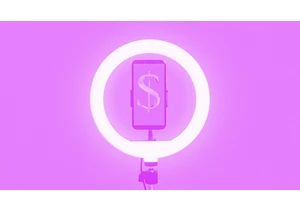Not to humblebrag—okay, maybe just a little—but I first rode in a Google self-driving car in 2013, back when hardly anyone had. The opportunity came as I was researching a Time magazine cover story about Larry Page, Google’s then-CEO. During our interview, he sounded typically impatient as he told me that autonomous driving could have been a thing even a decade before if anyone had put their mind to it.
There was, of course, a lot more work to do. Google kept plugging away. Eventually, its autonomous-driving project became a self-contained unit of Alphabet, Google’s parent company. It adopted the name Waymo and focused on launching an Uber-esque ride-hailing service. After years of testing, the Waymo One service finally removed its waitlist here in San Francisco last week, giving everyone the opportunity to ride in its modified Jaguar EVs. Waitlist-free Waymo rides are also available in Phoenix, and are reportedly “coming soon” to Los Angeles and Austin.
Over the years, I’ve taken demo trips in several experimental incarnations of Google/Waymo’s car. As a reporter, I’ve also tooled around in other autonomous vehicles, such as one from GM’s Cruise—before a nasty accident in San Francisco led to the company rebooting its entire effort; that melodrama is still playing out. But this morning, when I had an appointment with my eye doctor, I made my first robotaxi journey as an ordinary paying customer.

For all the things about Waymo that mimic the Uber/Lyft experience, there are fundamental differences beyond the empty driver’s seat. I loved that the ride didn’t begin until I pressed an on-screen button, which allowed me to buckle up at my own pace. (Human ride-share drivers usually roar off while I’m still fumbling with the seat belt.) Every Uber and Lyft I’ve ever summoned to my office has pulled up on the front side of the building, often making me skitter across a busy thoroughfare. The Waymo, however, picked me up and dropped me off in the sleepy alley out back—a choice that made a lot of sense, even though I wasn’t expecting it.
Some of the autonomous vehicles I’ve been in came off as if they’d been programmed to mimic a jittery student driver. The Waymo was way smoother. But it took 31 minutes to get from my office to my doctor and 21 minutes to return, a trip I’ve made in as little as 9 minutes via Uber. While some of that might be due to the vagaries of San Francisco traffic, the Waymo’s cautious driving clearly played its part. At one point the vehicle even began to slow its roll as it approached a green light, as if it expected the light to turn yellow—which it did. I’m also not sure how the Waymo chose its routing, which was particularly circuitous (albeit scenic) on the outbound trip. A human driver would likely have taken a more direct path and exhibited more urgency.

Then again, Waymo has every reason to err on the side of safety. Even though research shows its cars are better drivers than humans, the company is currently under investigation for various accidents and moving violations. Longer term, people (some of whom instinctively dislike autonomous cars) won’t trust them unless they visibly reduce chaos on the roads rather than increasing it.
The closest thing to an exciting moment during my two trips today was a minor, only-in-San-Francisco traffic disruption. On the way back from my appointment, my Waymo encountered a stalled cable car. Its ">gripman was crouched in the street, apparently performing some maneuver to get it going again. The Waymo knew something was amiss, displayed a message telling me to remain seated and belted, and waited to proceed until the cable car was moving again. Faced with the same situation an Uber driver couldn’t have performed any better, and would probably have grumbled more.
As encounters with extraordinary technology, my two Waymo treks were rousing successes. I plan to take many more, just because the whole experience is so fascinating. Still, the question remains: From a practical standpoint, why would you choose Waymo One over its human-piloted equivalents? (For the record, my rides were slightly pricier than an equivalent Uber or Lyft, balanced out by the lack of tipping.)
Dreary, anodyne ventures such as Amazon’s cashierless convenience stores have already proven that wringing the humanity out of commercial transactions isn’t necessarily an improvement. A Waymo will never help you with your luggage, offer you bottled water, or ask you how your day’s going. Instead, you get a ride that’s so distraction-free it feels like you’re in a private office on wheels. This morning, I took advantage of my solitude to get some work done, in a way that would have been harder with conventional ride-sharing. In an Uber or Lyft, by contrast, I don’t even like to make phone calls.
Ultimately, autonomous driving’s potential to save vast numbers of lives is by far the biggest reason to bother with it at all. It will require more than Waymo availability in a few cities for humanity to benefit in a big way, and some pundits have already written off the self-driving dream as a failed experiment. But even at its current scale, Waymo One ranks among AI’s more remarkable real-world accomplishments. If you get a chance to ride in one, seize it—and see if it doesn’t leave you at least slightly more optimistic about the whole idea.
You’ve been reading Plugged In, Fast Company‘s weekly tech newsletter from me, global technology editor Harry McCracken. If a friend or colleague forwarded this edition to you—or if you’re reading it on FastCompany.com—you can check out previous issues and sign up to get it yourself every Wednesday morning. I love hearing from you: Ping me at hmccracken@fastcompany.com with your feedback and ideas for future newsletters.
<hr class=“wp-block-separator is-style-wide”/> https://www.fastcompany.com/91150764/google-waymo-one-self-driving-cars-san-francisco?partner=rss&utm_source=rss&utm_medium=feed&utm_campaign=rss+fastcompany&utm_content=rss
Login to add comment
Other posts in this group

Child psychologists tell us that around the age of five or six, children begin to seriously contemplate the world around them. It’s a glorious moment every parent recognizes—when young minds start

During January’s unprecedented wildfires in Los Angeles, Watch Duty—a digital platform providing real-time fire data—became the go-to app for tracking the unfolding disaster and is credit



Yahoo’s bet on creator-led content appears to be paying off. Yahoo Creators, the media company’s publishing platform for creators, had its most lucrative month yet in June.
Launched in M

From being the face of memestock mania to going viral for inadvertently stapling the screens of brand-new video game consoles, GameStop is no stranger to infamy.
Last month, during the m

The technology industry has always adored its improbably audacious goals and their associated buzzwords. Meta CEO Mark Zuckerberg is among the most enamored. After all, the name “Meta” is the resi
